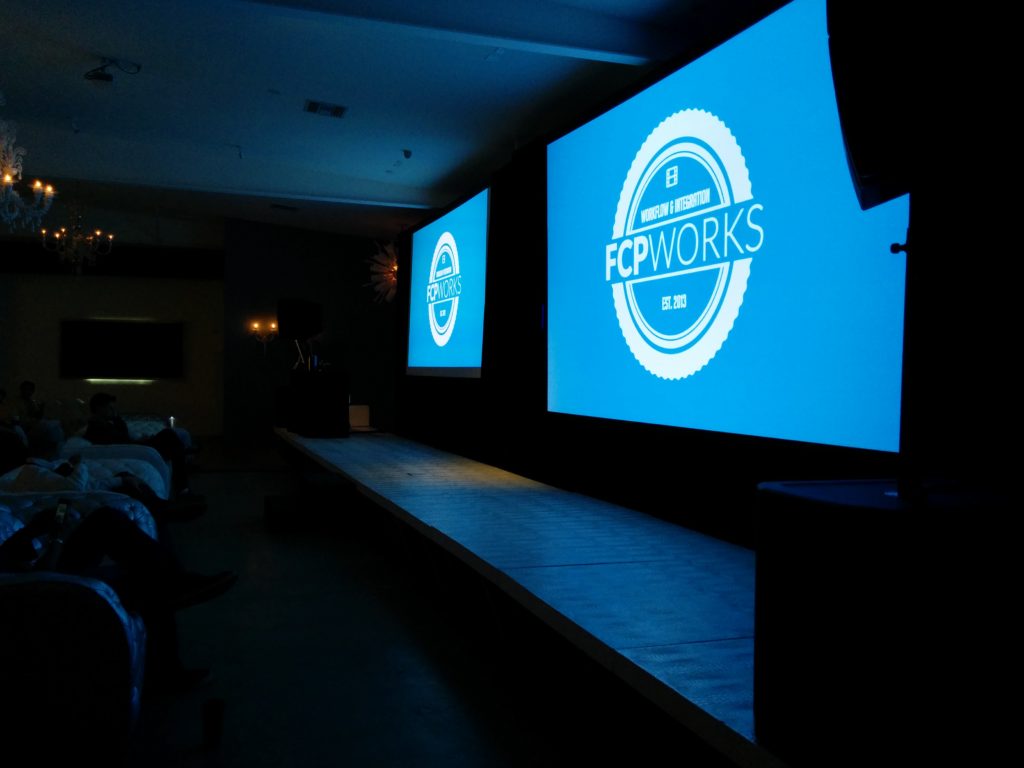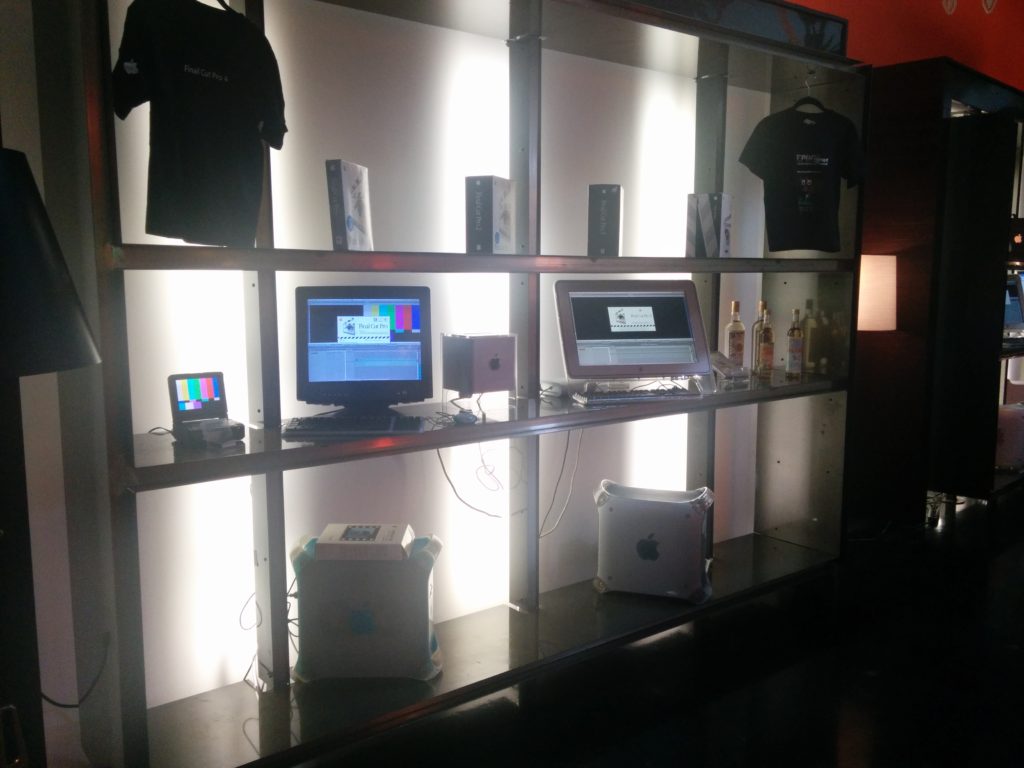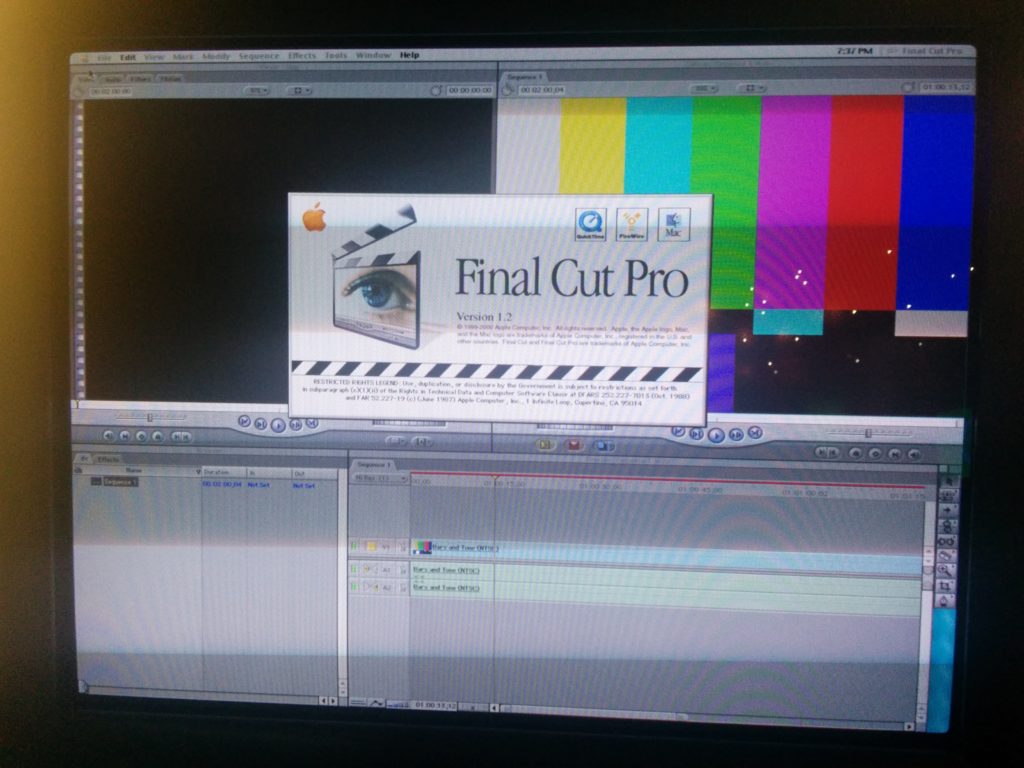This past Saturday, I had the privilege of both attending and demoing FCP at the FCPWORKS L.A. launch event. It was a great day that harkened back to the early years of Final Cut when Apple would demo and do one-on-ones with prospective and upgrading users.
What was great about yesterday’s event was not only that channel partners like AJA and Quantum were there showing full support for the new FCP ecosystem, but that Apple was there as well, demoing all the new features. The fact that there were about 10 Mac Pros chugging away was pretty impressive, too. I got to work on an 8-core all day and… holy shmoly I want one.
But the BEST part of it all was this FCP Legacy museum which editor Darren Roark put together.
While Darren did all the work, I was able to provide the piece de resistance: an original install of FCP 1.2.5. Not a copy folks — this was installed from the original CD! The FCP museum really put the history of the software in perspective.
Let’s go back in time for a moment. From 2002 to 2004, I worked for an Apple reseller and post systems integrator. At that time, I aided the Apple reps who would demo new versions of Final Cut for audiences both small and large at the events which the company held.
Sometime around the launch of FCP 4.5 (otherwise known as Final Cut Pro HD), I had a discussion with one of Apple’s FCP reps about issues I was having with the speed effect and its inherent issues with media management. His response was frank. Quicktime would have to be completely rewritten for that to work. This made little sense to me at the time.
I also remember hearing rumors of FCP moving to more of an ecosystem model, with a system designed specifically for it. Those rumors didn’t transpire 11 years ago, but they are all apparent now. We now have rewritten code for Quicktime in the form of AV Foundation and we have a system specifically designed for FCP as seen in the new Mac Pro!
We’ve come a long way. What excites me most about the current technology is the effect it is having on production. For the first time, the tools that we are making for FCP using XML are rippling back to the set. For example, there is Philip Hodgetts’ Lumberjack, which is a live logger; and Sam Mestman’s upcoming Shot Notes X transfers script notes into FCP X.
Two and a half years into the launch of FCP X, I can say that I’m very pleased with what’s going on in the community. I’m looking forward to more exciting work, discovering new workflows, and getting home a little earlier every night, given all the new speed enhancements. That last one might be a pipe dream, but one can hope!


